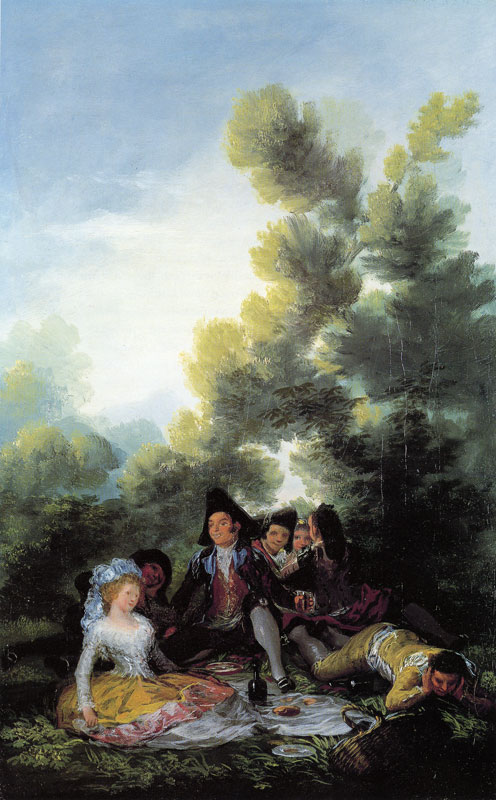The etymological record of merienda is a blank between 1554 and 1626. After surfacing in Lazarillo de Tormes as a snack, it does not reappear until Quevedo’s El Buscon denotes a typical alfresco picnic. The change in meaning is unaccountable. In this instance, Don Pablos, el Buscon the swindler, plan a sumptuous luncheon in the Casa del Campo, then and now, one of Madrid’s favorite parks.
Pablos’s merienda is part of a scheme to seduce a young heiress, Donna Ana, into a loveless marriage. He’s so sure of succeeding that he doesn’t sleep without how he will spend here dowry. Playing the part of the gracious host, Pablos creates the illusion that he is a man of substance. He claims to be Don Felipe Tristán,” and he tells Donna Ana that he is in the king’s service. He offers Donna Ana and her dueñas, chaperones, a cold lunch in the park but hires servants to chinaware, tables, chairs, and an array of hot and cold meats, fresh fruits, and desserts.
For the most part, the merienda is a success. But when Pablos’ comedy is unexpectedly recognized, the moment is lost, and he loses Dona Ana. Pablos has a knack for always coming up comically short.
The subject of Francesco Goya’s A Picnic [La Merienda] at the National Gallery likely alludes to Quevedo’s merienda Casa de Campo. Goya captures the comic moment in which Pablos’ earnestness wooing Dona Ana is contrasted with the astonishment of the servant (hired for the occasion), who stuffs his ears so that he cannot listen to the con.
Featured Image: Francesco Goya’s painting A Picnic [La Merienda] (1785/1790)
See Francesco de Quevedo. Two Spanish Picaresque Novels: Lazarillo De Tormes; The Swindler. Translated by Michael Alpert. New York: Penguin, 2003 Francisco de Goya. A Picnic (1785-1790. National Gallery London; Carolyn Nadeau El Buscon Cervantes & Co. Press 2007

